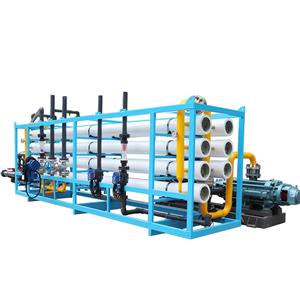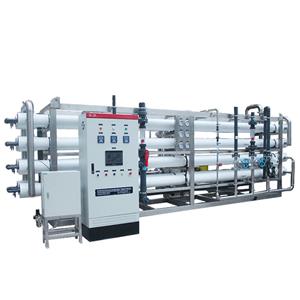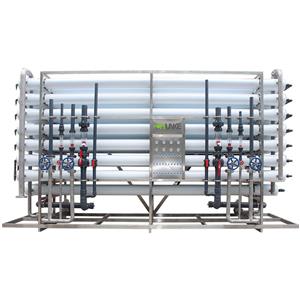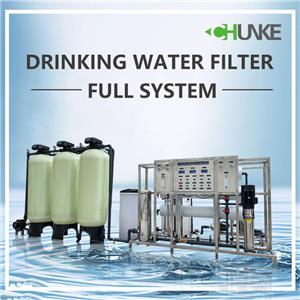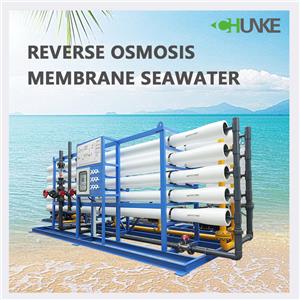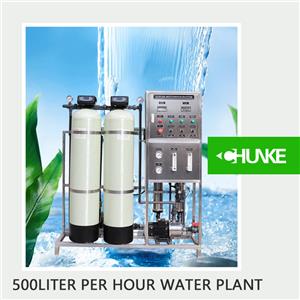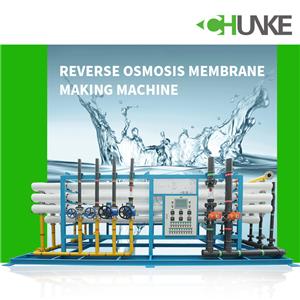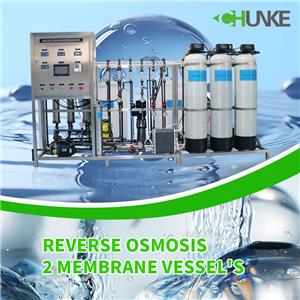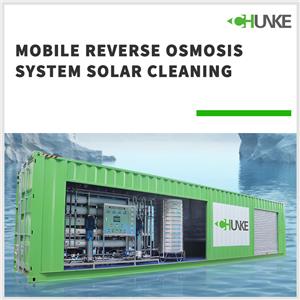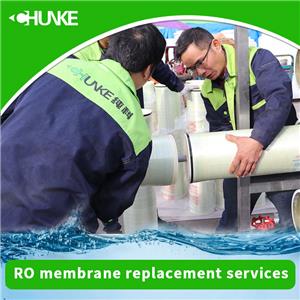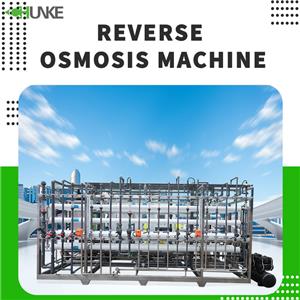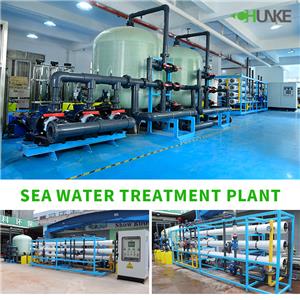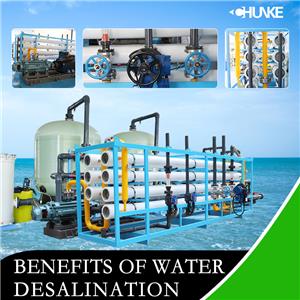-
08-06 2024
Is it safe to drink water from a reverse osmosis filtration system at home?
The reverse osmosis system can remove heavy metals (such as lead, mercury, arsenic), nitrates and other harmful substances in water. The reverse osmosis system can provide safer drinking water, especially for sensitive groups such as infants, pregnant women and the elderly.
-
07-22 2024
Which reverse osmosis membrane is used for seawater desalination?
Types of reverse osmosis membranes used in seawater desalination: 1. Spiral-wound reverse osmosis membrane, 2. Flat-plate reverse osmosis membrane, 3. Hollow fiber reverse osmosis membrane.
-
07-19 2024
What does 500 LPH mean in a 500 LPH reverse osmosis device?
LPH is the abbreviation of "Liters Per Hour", which means "liters per hour". Therefore, 500 LPH means that the reverse osmosis equipment can process 500 liters of water per hour. This label is usually used to describe the water production capacity or water treatment volume of the equipment.
-
07-12 2024
How to make a reverse osmosis membrane? What is its manufacturing cost?
Manufacturing cost of reverse osmosis membranes includes material costs, equipment and energy costs, labor costs, and maintenance and management costs. Taking the manufacturing of one square meter of reverse osmosis membrane as an example, the total cost is approximately between US$20 and US$50.
-
07-10 2024
How often should I replace my RO membrane? How much does it cost?
Under normal circumstances, the replacement cycle of household reverse osmosis membranes is generally 2 to 3 years; the replacement cycle of commercial and industrial membranes is 1 to 2 years. Common household reverse osmosis membranes cost between US$30 and US$100...
-
06-20 2024
Does the solar reverse osmosis system need to be cleaned?
Where does the solar reverse osmosis system need to be cleaned? 1. Solar panels 2. Pretreatment unit 3. Reverse osmosis membrane 4. Booster pump It is necessary to regularly check the operating status of the pump and clean the inlet and outlet filters, usually every 3-6 months.
-
06-06 2024
How Often Should Reverse Osmosis Membranes be Replaced?
The replacement cycle of reverse osmosis membrane is usually every 1 to 2 years. This is because over time, various contaminants such as heavy metals, minerals, pesticides, and salts in the water accumulate on the surface of the reverse osmosis membrane.
-
05-22 2024
What Does Reverse Osmosis Machine Do?
The main function of the reverse osmosis machine is to remove impurities, dissolved solids, bacteria, viruses and other harmful substances in the water through a semipermeable membrane. This makes reverse osmosis systems a reliable drinking water purification technology. Through the pre-filter, large particles and sediments in the water are removed to prepare for the subsequent reverse osmosis process.
-
04-22 2024
What is a seawater treatment plant?
The first step in a seawater treatment plant is the transport of seawater from the ocean to the treatment plant by an inlet pump. Seawater contains a large amount of salt and impurities, so it needs to go through a series of pretreatment steps before entering the desalination system. These pretreatment steps include filtration, desalination and disinfection to ensure that the raw water quality meets the requirements of the desalination system.
-
04-01 2024
What are the benefits of seawater desalination?
With much of the world facing freshwater shortages, one of the biggest benefits of seawater desalination technology is providing a reliable source of freshwater.

